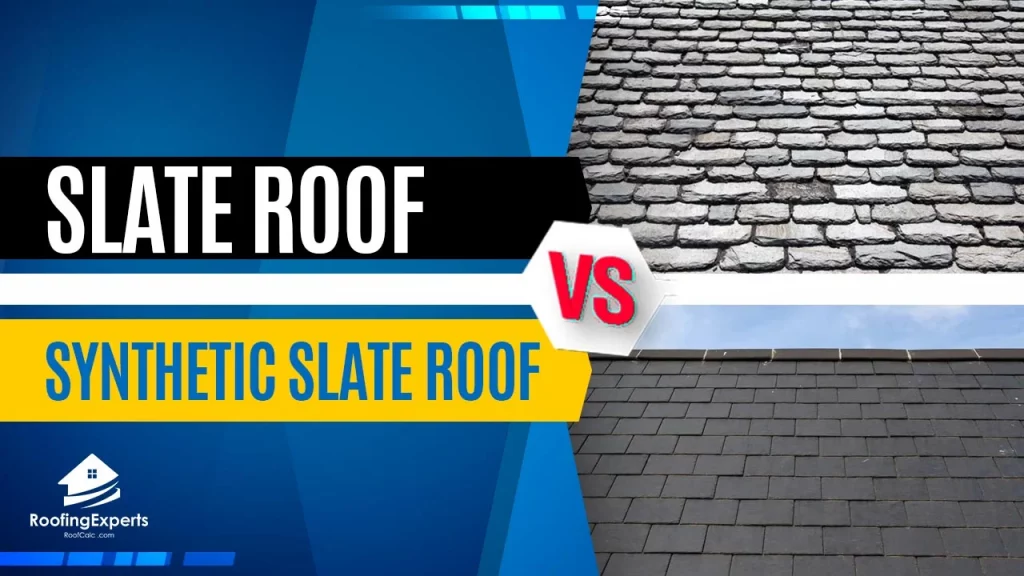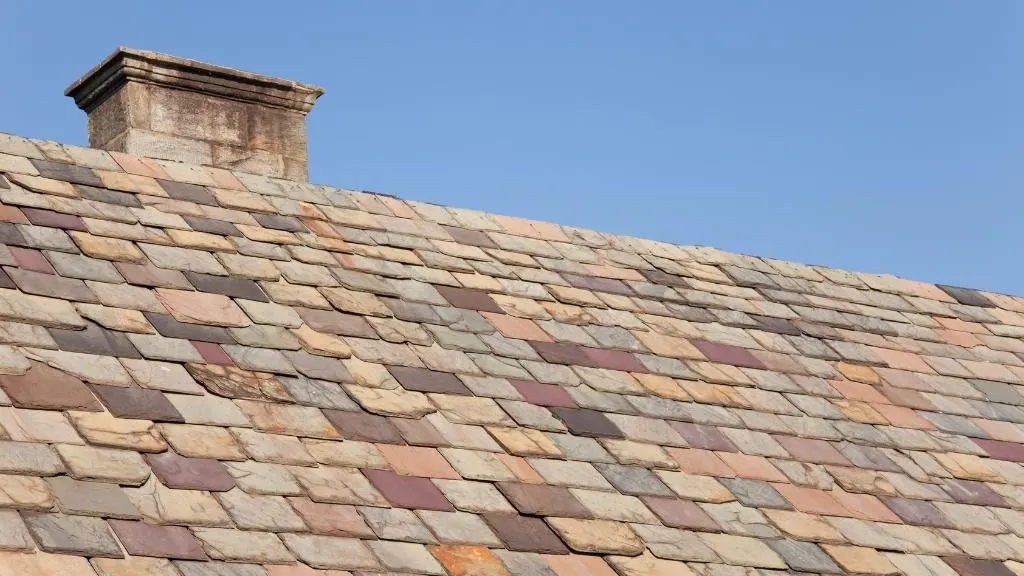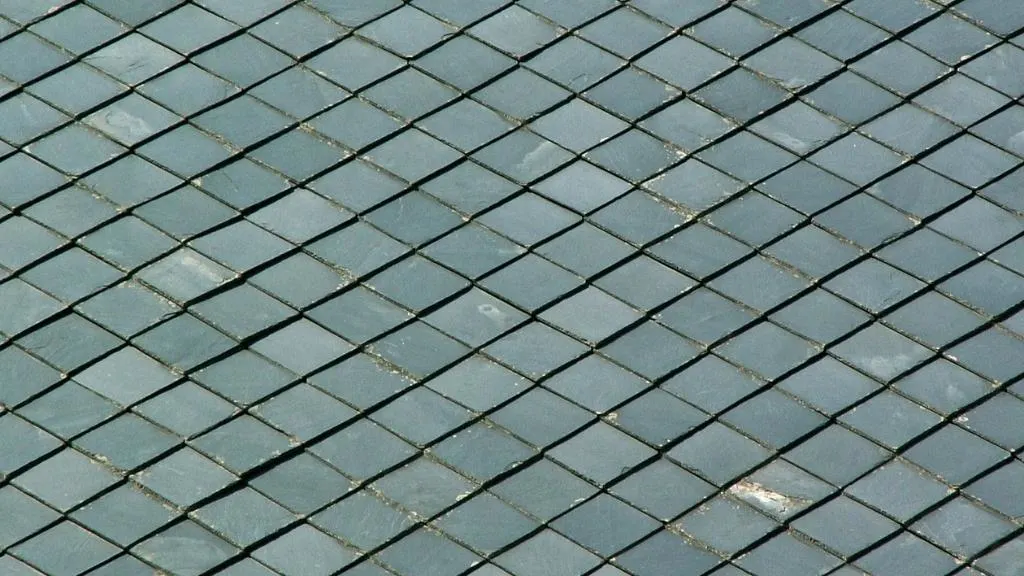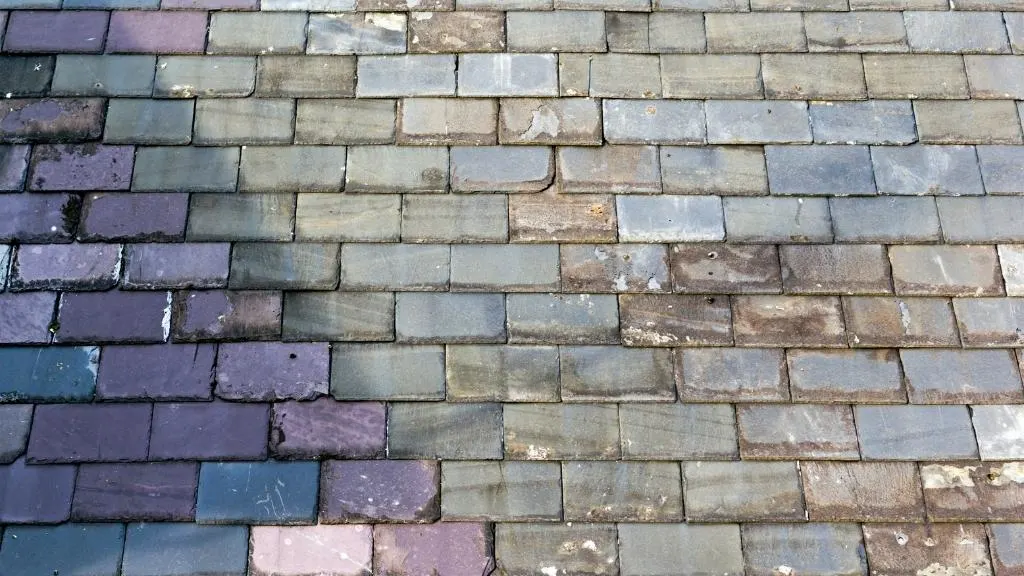
Roofing is a big investment and an important decision. Slate roof vs synthetic slate roof, what’s the difference? Let’s take a look at how they differ in this blog post shall we?
Slate Roofs are made from natural stone or clay tiles that have been fired to produce a durable, long lasting product.
They come with their own set of benefits such as being fireproof and waterproof but there are also some drawbacks such as weight and cost.
Synthetic Slate Roofs use polyurethane foam which has been sprayed onto sheets of aluminum that can be cut into tiles or panels for installation on roofs.
Not only do they not require any special maintenance like regular slate roofs, but they’re also lightweight.
Choosing a roof can be very daunting. Slate roofs are an old school option that will last for many years, but they’re expensive and require maintenance to keep them looking good.
Synthetic slate is cheaper and easier to maintain – which is why more people are choosing it over the traditional slate. Also, synthetic slates come in different colors so you can match your home’s exterior color scheme!
Slate Roof
A slate roof is a premium, high-quality type of construction that can be found on homes in the most expensive areas. These roofs are made out mostly from natural slates and other materials like clay.
They can last a lifetime and often come with a warranty that guarantees the slate against breakage for at least 25 years. That might sound like an eternity but then again, these roofs don’t need to be repaired or replaced.
Their natural material is fire-resistant and water-proof so they’re capable of protecting your home against extreme weather conditions. The Slate roofing material is often overlooked because customers are unfamiliar with its value and capabilities.
Before you decide to install a slate roof, make sure that your questions and concerns are answered by an experienced contractor.
Slate roofs are a popular style for homes in the US. There are two common styles, including the standard pattern and random width patterns that can be found all over America!
Slate is an essential material used in the construction of buildings. It’s made from rock, which has been transformed by low-grade regional metamorphism into slate through heating and cooling over time.
The Pros of Slate Roofs
- Slate is a “forever roof” because homeowners will only need to install one in their lives, but other roof types may have to be replaced two or three times.
- Slate roofing also has several aesthetic and structural advantages. Its natural beauty and durability add to the resale value of your property.
- Slate is a well-liked roofing material that may be used to improve the architectural style of your property and maintain its appearance over time.
- Slate roofs have several advantages. They are highly fire resistant and mold resistant, as well as being frost-resistant and break-proof.
- In addition, because slate has a low water absorption rate, it is very resistant to frost damage and breakage caused by freezing.
The Cons of Slate Roofs
- Slate roofs are considered an “upgraded” style of roofing, which means that they’re more expensive than regular roofs.
- A common disadvantage of slate roofs is their weight. They are even heavier than stone roofs, which can make the building they’re on vulnerable to damage from high winds or heavy snowfall.
- Slate is a more expensive product compared with other roofing materials like asphalt shingles. This means that it’s only practical for people who own homes in the most expensive neighborhoods.

Synthetic Slate Roof
These synthetic slate roofs are designed to look just like the usual slate roof. They have chisel marks that imitate hand-crafted work, and they aren’t too shabby either!
The synthetic slate roof is a great option for homes that need to withstand the elements.
They come in many different materials, including plastics and polymers as well as clay or fiber cement which have their own unique characteristics depending on what you want them to perform best with your needs at hand–this will help determine where each type can be most useful!
Manufacturers of plastic as well as polymer composite have been producing natural slate tiles that look just like the real thing for years.
Recycled rubber, plastic sometimes form the basis of these durable products which can be used in any room without looking too synthetic or man-made; perfect if you want your home’s design aesthetic to seem organic rather than manufactured!
The Pros of Synthetic Slate Roofs
- In general, synthetic slate roofing manufacturers and installers claim that their products are less expensive to install and last far longer than natural slate and other roofing materials.
- Synthetic roofs, on the other hand, are expected to last for many years.
- When compared to slate, shingles are a breeze to install. They may be installed by roofers from any company since they do not need as much expertise as slates.
The Cons of Synthetic Slate Roofs
- Synthetic slate, on the other hand, is not as desirable as genuine slate. Its durability and ease of installation make it appealing to manufacturers.
- However, experts can actually spot easily if the slate is natural or synthetic.
- Synthetic materials can curl, fracture, and decompose in severe climates.
- The rubber material and plastic material are more flexible than asphalt shingles, which means they may curl and crack occasionally, allowing water to crawl into the attics of roof owners with synthetic roofing materials.
- The roofing can discolor or fade over time.

Main Comparisons Between Slate Roof Vs Synthetic Slate Roof
Weight of Material
Unless you live in a region with particularly heavy snowfall, you probably won’t have to worry about the weight of your roofing materials.
Slate roofs, however, are rather thick compared to other popular roofing materials and thus are really heavy.
To bear the weight of your slate roof, your house must be built or framed. This prevents your home’s walls from falling out and your roof from caving in.
Synthetic slate shingles are much lighter than luxury asphalt shingles.
Lifespan of the Material
The number of years you’ll enjoy your roof is determined by its lifespan. Slate is one of the most long-lasting roofs on the market, as I previously stated.
How long does a natural stone roofing system really last and how do its qualities compare to those of a synthetic slate roof?
It will be the last roof you ever install on your home as long as your slate roof is correctly installed and flashed appropriately.
The lifespan of a slate roof is difficult to determine, but there’s no reason a slate roof shouldn’t survive for at least 75 years.
A synthetic slate roof will not last as long, but you can expect it to survive about 40-50 years if installed properly. When it comes to longevity, a slate roof clearly beats out a synthetic slating roof.
The Price Difference Between Slate Roof vs Synthetic Slate Roof
Slate is a more expensive material and, as a result, you can expect it to be two to three times more expensive than a typical architectural shingle roof.
Depending on the final finish, you can expect to pay anywhere from 15 to 16 dollars per square foot for installation. The cost of a slate roof will differ according to the size of the property and the pitch of the roof.
Slate can be an expensive and heavy product, as it weighs about 500 pounds per square foot.
If your home doesn’t have the proper engineering for slate roofs you’ll need to make sure that there aren’t problems before adding this type of roofing onto a structure built primarily with other materials like wood shake or shingle siding panels for instance.
Whatever you pick, make sure you find a roofing contractor with the experience to back up your decision. Both are excellent and long-lasting roofing systems, but it is your decision as to which one is best for you.
Don’t waste your money on a bad roofing contractor.
Common Factors that Affect the Cost of Slate Roof and Synthetic Slate Roof
The cost of your new roof is primarily determined by the following factors.
- The type of roof material you choose – be it slate or synthetic slate.
- The size of the roof – generally, the larger the home’s area, the greater you’ll have to spend.
- If your property is a commercial building, expect to pay more for installation than you would if it were a residential house.
- The roofing system and the entirety of it if your project is new and not just a repair.
- Labor required and time that the contractors or roofers have to take to install your slate roof.
- Accessibility of your roofing if the pitch is too steep or not.
- Overall service charge of a roofing contractor you hire.
This is simply a brief overview of what affects the cost of a new slate roof or synthetic slate roof, as well as any other sort of roof you want.
Hopefully, you can now make an informed decision on the type of roofing system you choose for your home.
With the above comparison between Slate Roof vs Synthetic Slate, I’m hoping you will be able to select the best roofing material for your home.
The Choice Between Slate Roof vs Synthetic Slate Is Yours to Make
As with any other service or product you purchase, the choice is yours as to which heat reflective material is best for your home.
You can visit roofing companies to learn more, but this should give you a solid basis of comparison between Slate Roof vs Synthetic Slate for now.
It is entirely up to you as to which material is best suited for your property. Ultimately, the choice between slate roof vs synthetic slate rests with you.


